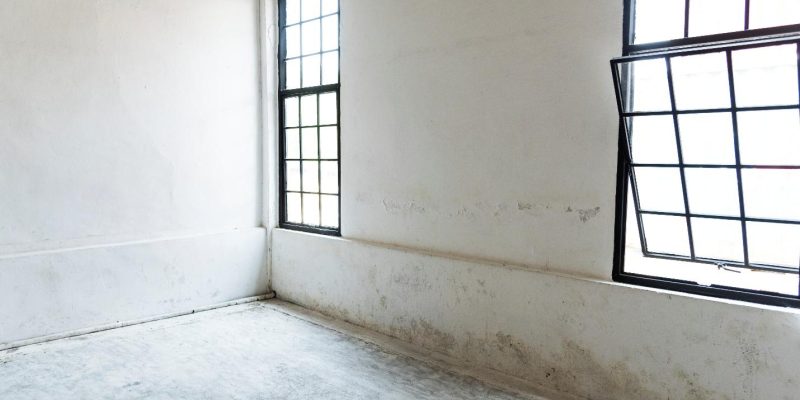Burst pipes, overflowing baths, and that freak summer storm can soak your home in minutes. But long after the puddles have been wiped up, invisible danger could still be building in walls and under floors. Knowing how quickly mold could appear – and what it can do to your home and your health – helps keep you ahead of the damage.
Why mold thrives in moisture
Mold spores float through the air every day, but they only become a colony when two things happen: moisture and time. Things like damp carpet pads, wet drywall, and humid crawl spaces are perfect breeding grounds.
Within 24 to 48 hours those spores attach to soft surfaces and start growing roots called hyphae. As the colony expands, more spores and moisture are released, even gases that weaken the building materials. Cleaning up after water damage and drying the building components is just as important as fixing the leak in the first place.
“Can mold grow in one day?”
Yes – if everything is perfect. Warm temperatures, porous materials, and stagnant air all contribute to the speed. Even a small drip under the kitchen sink could make mold if the cabinet stayed damp overnight. You may not see a fuzzy patch right away, but it could already be growing under the surface. Due to the speed at which growth accelerates, emergency flood services often emphasize that you should respond within the first 24 hours from the event to minimize how deeply moisture is driven in, allowing the removal of mold to be less invasive and costly.
Health symptoms to watch
Sometimes the first sign of a hidden mold problem isn’t an obvious stain on the wall, but rather, a tickle in your throat.
If you can pay attention to subtle shifts in how you feel after a water event, you have the chance to catch the trouble before it spirals out of control.
- Health impacts from mold will not happen to everyone the same way, but common indicators might include a coughing episode, runny noses, itchy eyes, or some other unexplained cough/hag that resolves when you aren’t at home.
- Someone who has asthma or allergies might have a flare up, while children or seniors may react more vigorously.
- Certainly, over time, some molds produce compounds or substances that contribute to every body’s respiratory system, even those of a healthy adult.
If your child or someone else in your home suddenly has any of these symptoms – especially if it occurred after a leak – it is advisable to check for hidden areas such as between or behind baseboards, behind a wall or interior wood, or inside HVAC or utility closets. When in doubt, there are experts on mold removal that can take samples for you as part of a professional assessment.
Click this link to learn more about some health effects associated with mold exposure.
Steps to dry spaces fast
Once the water stops running, the clock starts! A quick and organized response limits liquid saturation into hard-to-reach hidden areas.
When water is to be dried out, being rapid about it beats being perfect about it!
- First, stop the source and blot or vacuum up any standing water with a wet-dry vac.
- Then pull up the wet rugs or laminate so the subfloors can dry.
- Open outside windows to ventilate and run the fans to make sure the humid indoor air flows outside.
- A dehumidifier can help reduce the drying time by removing moisture created by the fans.
- Dehumidification units rated for commercial use can typically reduce drying time quicker than products purchased at a local box store. This is because the former are designed for high-moisture environments.
- If you are dealing with a larger loss area or you suspect the insulation and drywall are saturated, it’s time to call in a certified restoration company.
Many of which are available 24/7 and can be onsite in under 1 hour after making the call. One option in our area is Strictly Cleaning Restoration (https://strictlywaterdamagerestoration.com/). They use industrial air movers, moisture meters, and thermal imaging to ensure the hidden cavities dry completely.
When to seek professional help
If someone spills a glass of water on a table, it might be easily cleaned up yourself if the spread is small. Once it begins to cover several square feet, or, you have contaminated water, such as from a toilet overflow, you have an area in which a professional must handle. Specialists also test for humidity levels within wall cavities, set up containment barriers, and safely and effectively remove and dispose of any mold-laden materials.
And lastly, specialists will document everything they do for your insurance claim. If you come back after several days to a musty smell or moisture reading remains above 16 percent, pick up the phone and call a restoration company. The longer you wait, the larger the colony grows, the more likely structural repairs will be a necessity.
If you choose licensed contractors who are available 24 hours if needed, you can rest easy knowing they are only a call away. A small leak may not seem harmful today, tomorrow that leak may have bred a colony of mold that damages the building and compromises your family’s health. If you take action quickly, dry thoroughly, and know when to engage and hire 24-hour water damage specialists you will convert any surprises into manageable repairs. Be vigilant, trust your senses, and remember, always a dry home is a healthy home.













Comments